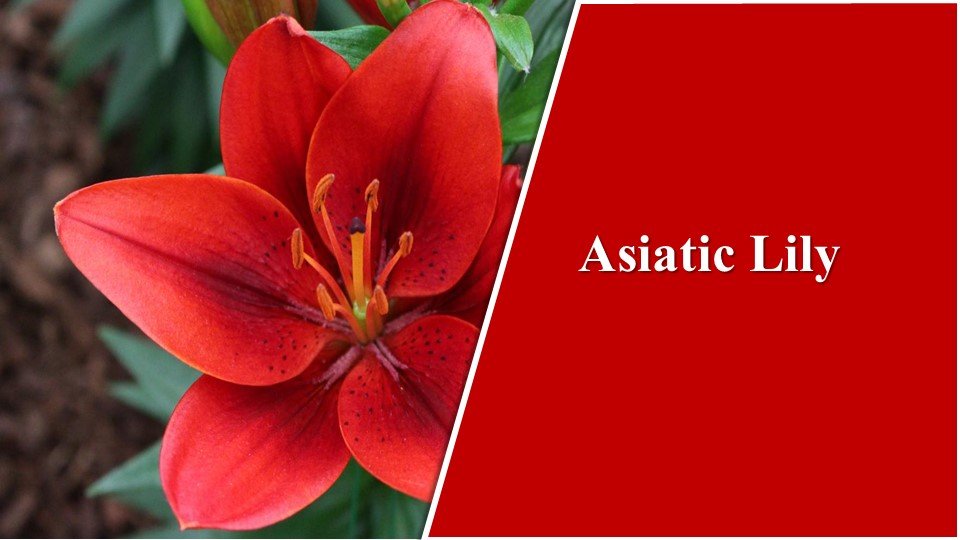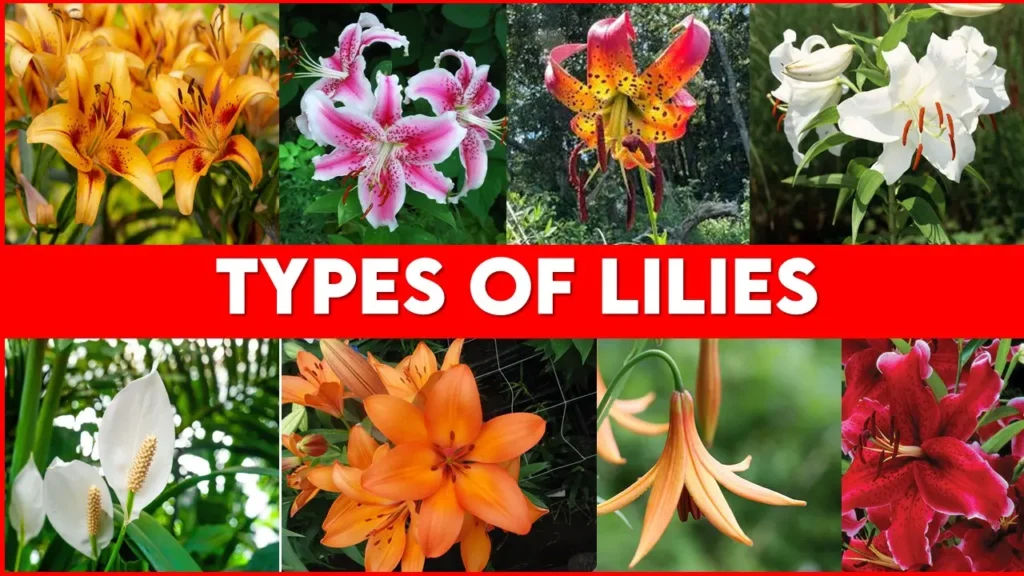Lilies are those flowering plants that have an old history of at least 36 centuries. There are many species of lilies, including trumpet and tiger lilies, which are usually quite tall and perennial.
Most lilies grow from a bulb, which in some species develops into a rhizome, which carries small bulbs. Lilies have originated in continents like Europe, North America, and Asia, with more than 100 species of cultivated varieties, and an array of shades. They tend to grow wild in forests and grassy plains but some species grow wild on damp ground. Since each category has certain distinct characteristics and needs, they all have a few traits in common, like establishing bulbs that store food and water and having six petals and 6 stamens.
In the this article, one will get information about different types of lilies in India and their meaning, and how to look after them.
10 Most Beautiful Lily Species: Types of Lilies in India
India is blessed with various lily species, each with its unique beauty and traits. The following represent some of the most popular types of lilies in India::
Asiatic Lilies
Perhaps the most widely grown types of lilies in India are the Asian lilies. Their bright hues, which vary from yellow to pink to orange, are widely recognized. Gardeners like these lilies since they are simple to grow and easy to manage.
They come in many different vibrant colors, including shades of orange, red, yellow, and creamy white. It is sad to say that, Asiatic lilies are a favorite of deer and rabbits. They have strong, erect stems that rarely need staking when planted in full sun. these lilies make wonderful, long-lasting cut flowers.

Oriental Lilies
Another popular variety among types of lilies in India are oriental lilies. They are more famous due to their beautiful floral designs along with the strong fragnance and big, eye-catching blossoms. Although they need a little more care than Asiatic lilies, these flowers are also easy to cultivate and sustain.
They have wider leaves than some other varieties of lilies, and the foliage and flowers are deer and rabbit-resistant. The anthers of Oriental lilies produce a lot of heavy pollen. If used as a cut flower, pull off the anthers as the bloom opens to keep the pollen from staining furniture. Oriental lily flowers are big in size as a dessert plate, and many buds are found on each stem. Backyard Gardens are more suitable area to grow these flowers.

Trumpet Lilies
These hybrid lilies, often known as Aurelian lilies, are truly amazing. Arrangements of vibrant, trumpet-shaped blooms that are prolific, fragrant, and long-lasting. The leaves of these plants are large, though not as broad as those of an Oriental lily, and their petals are flawless. There are variations in the number of buds per stem between trumpet lily types; some have up to twelve or more.
Trumpet lilies look like a star-shaped throat in striking color and exist in a variety of colors, like white, yellow, orange, cream, and pink. African Queen, a kind of orange trumpet lily variety, is a favorite of many people.

Orienpet Lilies
Among the different types of lilies in India, Orienpet lilies, is a hybrid of trumpet and Oriental lilies, which belong to the best varieties of lilies among the types of lilies in India for summer gardens. Before their blossoms fully open into a broad bloom, they incorporate a shallow trumpet-shaped bloom. The flowers reach up to 6 to 10 inches in diameter and in various colors like pink, yellow, orange, red, and white
The plants reach two to three feet tall, and the outward-facing blossoms have a strong aroma. The flowers of these types of lilies in India come with many beautiful options and that too in different colors and sizes. These lilies are most suitable to grow as cut flowers.

LA Hybrid Lilies
LA hybrids are the showgirl relative to traditional Asiatic lilies, originating from a genetic cross between Asiatic and “Easter-type” lilies. In comparison with Asiatics, the flowers are larger, bolder, and more appealing. In addition to this, they also offer a greater variety of bright colors.
Compared to Asiatic lilies, LA hybrids cannot scent. LA hybrid lilies are real garden notable spots since they shine for weeks and create beautiful cut flowers. The plant develops itself up to a height of four feet, and each lily flower has a diameter of approx. seven inches.

Turk’s Cap Lilies
It is easy to recognize Turk’s cap lilies by their recurved petals. Turk’s cap lilies are as adorable as they arrive, resembling little butterflies dangling from elegant flower stems. Known by a different name, martagon lilies, each stalk yields a dozen or more flowers.
These lilies come in orange, yellow, red, and shades of pink. Many cultivars have stalks that can reach heights of up to six feet. The majority of the types are quite fragrant, and some have flowers with patterns while others do not.

Wood Lily
The wood lily, or Lilium philadelphicum, has originated from North America and is known for its Turk’s cap-shaped blossoms, which come in a variety of colors from red to orange.
They attract butterflies and bees which helps to do pollination, along with improving the health and richness of the nearby plant ecosystems.
These types of lilies in India grow in slightly acidic, well-drained soil and are best in partial shade. Plant bulbs 3 to 4 inches deep in autumn season.
It’s significant to know where to find lily bulbs since their robust development depends on their quality being assured. To ensure that your lily plants grow and thrive, it’s critical to understand the regular care needs of the various species of lilies.

Rio Negro Lily
Rio Negro, one of the Amazon River’s largest tributaries, inspired the name of the red lily flower plant. It is majorly known for its beautiful flowers that are impossible to forget. With an assortment of red, black, and light-colored stamens coming out from the center, they have a fascinating appearance. And to top it all off, the flower petals have a snow-white border around them, which is beautiful! Their disposal, look, and scent will leave one with little reason not to bring them indoors.

Casablanca Lily
This white lily flower plant, which gets its name after a town in Morocco, blooms all year round with camphor-white blooms that are a bright white and have a strong scent. The flower looks extraordinary and is connected to refinement in the zone of flowers.
The flowers of this types of lilies in India, of this big plant reach up to a height of ten to twenty-five cm, which makes them a beautiful option to grow as a cut flower. Along with this, this bloom is easy to cultivate and gives the growers a suitable option for growing them in flowerbeds, little containers, and domestic backyards.

Butter Pixie Lily
The name of this yellow lily bloom represents an attempt to clarify its appearance—yellow flowers dusted with heavenly dust! Large flowers reaching over fifty centimeters when fully developed make this plant perfect for complementing any setting.
Even in lack of any scent, these blooms’ brightness is irresistibly addictive. These trumpet-shaped blooms need frequent pruning and good maintenance.

Bright Diamond Lily
As stated earlier, this plant matures into lovely, milk-white blossoms which are a symbol of innocence and purity. These blossoms are frequently used in the effort to create perfumes since they are lovers of symmetry and leave a powerful scent behind them. The lush green foliage of the plant, surrounded by brilliant white blooms, perfectly complements its overall appearance. The standard for fresh-cut flowers is this lily. Every season, lilies offer an eternal, stylish touch to the yard. Vases full of cut lily flowers look great with home decor.

Yellow Water Lily
With these water lily types of lilies in India variety, one may now integrate a little bit of the water aspect within their garden. Due to its attractive yellow blooms that float on the water’s surface, this water lily flower is grown extensively throughout the Indian subcontinent.
The leaves of this plant vary in size, but the lilies themselves are extremely beautiful and fascinating! Additionally, a dwarf version is now available, making it easy to grow them in small bowls of happiness.

Peace Lily Flower
Even though it’s not a real lily, we had to include this type to finish out the collection. While indoors, peace lily plants are a common houseplant in the Indian subcontinent, mainly planted for their lovely white blossoms and easy care.
These types of lilies in India when flowers require very little maintenance, so beginner or time-constrained gardeners can grow them at home without worrying that they won’t do it right! The fact that it can be grown in soil and water is the nicest attribute. The peace lily plant has extra benefits because it purifies the atmosphere around it.

Elodie Lily
Talk about beauty and we’ll definitely end up talking about this type of tiger lily flower, with its double-layered blossoms. Its blooms are not as large as others, but due to the additional layers of petals that are inserted inside of them, they nevertheless look really beautiful.
The blooms are pink in color with lots of black polka dots in the petals. The blooms are also taken for cut-flower arrangements because they lack pollen.

Canada Lily
This lily tiger flower, which has evolved in North America, has adapted to grow in partly shaded areas, which is usually not suitable for most species. This flower cultivar has orange-yellow shades that dangle from the branches and with petals that tilt from the upward side. This plant quickly showcases itself as the main attraction of one’s landscape garden.
These types of Lilies in India require to be exposed to warmth for one to two months to grow and mature into a tiny bulb. Beyond that, these require a further 60 to 90 days of coldness before they start to develop.

Growing Environment: Types of Lilies in India
Shade net houses or polyhouses are utilized to grow lilies. For an adequate yield, the ideal day and nighttime temperatures are 21 to 25 C and 12 to 15 C, respectively.
Lilies flourish in low light conditions of 2000–3000 foot candles. Shade nets can therefore be employed to block out 75% of light during the summer and 50% during the winter. Inside the greenhouse, the perfect humidity range is 85-85%. Soil with a sandy loam pH of 6-7 is suitable.
Propagation Method:
Types of Lilies in India can be propagated with scales, bulblets, bulbils, and seeds to produce more lilies. Large-scale multiplication is achieved by the tissue culture strategy. The most typical way for lilies to reproduce is by splitting the bulbs that grow on the stems of most of plants just below the ground level.
After a year of growing, bulblets can be separated and planted individually to help produce more bulbs that reach flowering size.
Harvesting Time:
Typically, stems are taken when the first bud or less than five buds start to pop out in color. Spikes are sliced between 15 and 20 cm above the surface. The bulbs are permitted to grow up in the remaining lower section of the plant. It is preferable to collect lilies early in the day so as to avoid dryness. Lilies typically produce one stem per plant.
Wind- Up
An interesting diverse group of plants, lilies have something to offer every type of gardener. Lilies are considered iconic garden blooms for a reason—their stunning beauty, alluring smell, ease of care, and flexibility in many landscape settings have all contributed to their long history. One will always be able to find a lily that will delight and beautify their landscape for years to come with over 2,000 varieties to pick from. So, with this inference, are you all now able to tell about the types of lilies in India


